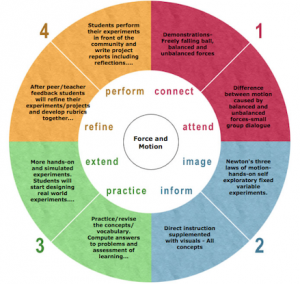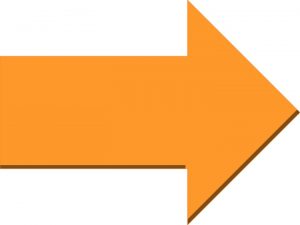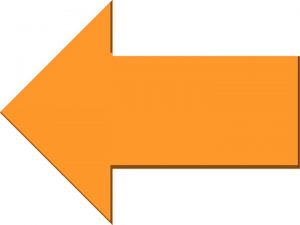Please download the PDF version of this lesson plan to view comments and connections.
Topic: Force and Motion Grade: 6 Time: 3 hours
Big Idea (Students will understand): Newton’s three laws of motion describe the relationship between force and motion.
Prior Knowledge: students understood that forces influence the motion of an object in grade 2. In grade 6 they will build upon this fact (evidence of spiral learning built in our curriculum) and goes a little more in- depth.
Cultivating Core-competencies to Promote 21st-century Skills: students will generate hypothesis’, make predictions, and test their predictions. Throughout the process, they will communicate their understanding in any modality respecting the audience. The whole process of this involvement and care about other people (taking turns, only one person speaks at a time, etc.) during the lesson will foster positive personal and social identity. This lesson is also an inquiry lesson, where critical and creative thinking is an essential part of the learning experience to be successful.

1. Connect and Attend: (20 minutes)
Teacher’s Role – Motivator and Witness, Method-discussion, Question to be answered – Why?
The objective is to allow the learners to enter into the experience, to engage them, and to integrate the experience with personal meaning. Thus teacher will try to create an opposite and fun experience (Demos/Experiments) for students asking some fun questions. For example, asking questions such as, I have this ball in my hand at some height from the earth, If I let it go, I hypothesize, it may go upward, downward or sideways, what do you think? Students already know that ball can only go downward because of gravity, but this will help them recall information from grade 2 force and motion lesson and prepare them to go further from the basic information. Another question can be to help them understand balanced and unbalanced forces. The teacher can ask students student to sit on a chair and then ask few other students to pull the chair without making them fall. It is possible that the students will either fall or he/she will apply equal and opposite force to counterbalance the gravity (make sure classroom environment is safe, caring and respectful. Students must not laugh at each other).
After these demonstrations, students will draw upon their past experiences and in-class experiments to answer the following question via a group dialogue to respond to the following questions-
- What is the difference between motion caused by balanced forces and motion caused by unbalanced forces.
- How balanced and unbalanced forces are evident in your life.
Students can record their reflections in their notebooks or an online tool such as Google doc. They can also record a voice/video note.
Content (Students will know): Students will revise balanced (sitting in a chair) and unbalanced forces via a few experiments such as-
- Pulling the chair away
- Race cars on ramps made of different materials to experience different amount of friction
- Other examples from school, sports and daily life, such as, motion caused by different types and strengths of force, effect of air resistance on freely falling bodies.
Curricular-competencies (Students will do): Questioning and predicting, Communicating
2. Image and Inform: (two chunks of 20-30 minutes)
Teacher’s Role – Conceptualizer and “Teacher”, Method – Imaging and direct instruction, Question to be answered – What?
It is the place where they link their personal, subjective experience with the objective, analytic world of the content at hand. Students will now move to deep reflection. Thus, they will focus on understanding newton’s three laws of motion via various experiments. The teacher may provide organized direct instruction after inquiry- based experiments (hands-on self-exploratory fixed variable experiments or videos) to explain how different types of forces work with complementary visuals. This stage is very helpful for students with learning differences.
(demos)
Content (Students will know): Newton’s three laws of Motion
- An object at rest will remain at rest unless acted on by an unbalanced force. An object in motion continues in motion with the same speed and the same direction unless acted upon by an unbalanced force. This law is often called “the law of inertia.”
- Acceleration is produced when a force acts on a mass. The greater the mass (of the object being accelerated), the greater the amount of force needed (to accelerate the object).
- For every action there is an equal and opposite reaction.
Curricular competencies (Students will do): Processing and analyzing data and information
3. Practice and Extend: (30 minutes)
Teacher’s Role – Resource and coach, Method – Facilitation, Question to be answered – How does this work?
Students will do a written test on the vocabulary and concepts they have learned so far. After mastering the basics of Force and Motion, now students are going to experiment with all the available materials to challenge their understanding (to create disequilibrium). Students will explore further and understand Newton’s three laws motion in depth by playing around with more experiments.
Experiments:
- Demo: Put a table cloth underneath a tower of medium size buckets and pull the table cloth very quickly. Bucket are not going to fall followed by following questions-
- Why skater falls if something comes on his/her way?
- Why did we need to put the seat belt?
- Why passengers fell forward if the driver of the car breaks too quickly?
- Is it easy to push a real car or a toy car? Why? Explain your answer. Give more similar examples.
- If you punch a wall why do you get hurt?
- Hot Wheel Car experiment: Does height of a ramp affect the distance a hot wheels car will travel?
Content (Students will know): the way different objects move on different materials.
Curricular competencies(Students will do): Evaluation, applying and innovating
Refine and Perform: (30 minutes to perform)– unlimited time to explore outside the classroom
Teacher’s Role – Evaluator/Remediator and Co-Celebrator, Method – Evaluation and Self – Discovery, Question to be answered – What If?
Refine is the step where the learners are asked to analyze what they have planned as their “proof” of learning.
Students will design the labs/games of their choice on newton’s laws of motion under teacher supervision and guidance. They will get timely peer and teacher feedback on their project to get proper scaffolding to improve the projects further. During the performance, the teacher may invite other teachers and admin to showcase students’ success, However, along with that, students need to reflect upon their learning in their project/lab reports (multi-modal).
Content (Students will know): Nothing new
Curricular-competencies (Students will do): Communicating, Planning and conducting, performing
Please click on “Read More” button to find out the activities, labs, and quizzes in detail.
Assessment: please see Assessment page to explore more about possible assessments and rubrics.


_____________________________________________________________________________
References
4MAT Lesson Plans. (2016). Retrieved August 10, 2016, from http://www.4mationweb.com/4mationweb/4mation.php
Building Student Success BC’s new curriculum. (2015). Retrieved 12 August 2016, from https://curriculum.gov.bc.ca/curriculum/science/6
